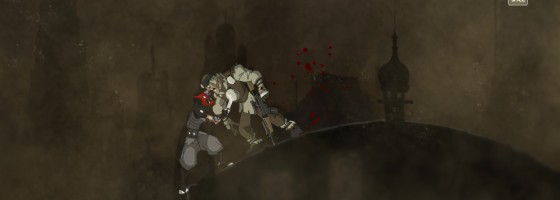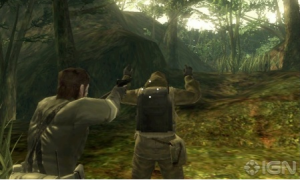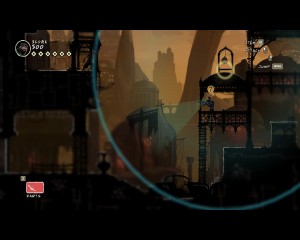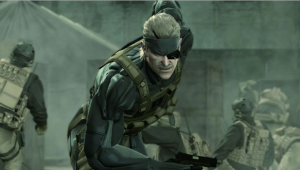Stealth design has evolved over the years with varying characters and situations. Recently playing through the game 2Dark, I found its stealth design to be lacking. Creating a good stealth game relies on four key areas of thought and what they mean about playing the game.
Detection:
The first one is obvious: How will the player be detected? Any stealth game will always rely on vision, but there is more to talk about here. We’ll be talking about the player’s options next, but can they mask their character? If your game features sound, what kind of actions will create noise?
Another point is how easy will it be to be detected? The quicker the player is spotted, the less chance they have to react. If being detected is immediate, it can lead to trial and error design.
While vision and sound are the most common, there are other options available. If your game features animals, what about scent detection?
Or with the classic movie Predator, how about body heat? In games that feature special detection rules, this can create an element of puzzle design of how to get around the detector.
Speaking of “getting around,” let’s talk about the player’s options.
Player’s Options:
There are two kinds of options that the player has access to in a stealth game. The first are options of avoiding detection.
This can be as simple as crouching or sneaking around, to stealth camouflage and cloaking fields. The more tools you give the player, the more options they have to deal with a bad situation. You need to be careful with how much power you give the player (which we’ll talk about later).
Regardless, it is important for the player to have at least some options at their disposal. If the player has no means of avoiding detection, then you don’t have a stealth game.
The second set of options are dealing with the enemies. What’s important about this group is that its not always required by the design. If you’re designing a horror game where the player is supposed to avoid combat, giving them the ability to fight back would be counter intuitive. Depending on the game, you can have lethal and/or non-lethal options.
Another decision you have to make is whether or not the player can permanently deal with enemies. Some games will limit these options or just not have them depending on the design. If the game is not balanced properly, this decision can make or break your game in terms of difficulty.
Enemy’s Options:
The enemy’s options refers to their means of finding the player. Once again, this can be as complicated as you want it to be. Some games may simply have grunts who walk around levels. We have seen games with aerial drones, enemies that crawl on the ceiling, ghosts and much more.
Good stealth design will usually give the enemy options to compensate for the player’s abilities. In the Batman games, enemies were given guns to counter Batman’s martial arts and devices to disable detective vision.
You usually want to avoid one enemy who can do everything, and instead design enemies that play off of different abilities or detection powers. The reason is that a super enemy can lead back to trial and error gameplay of trying to get around it.
Another point that we can talk about here is the enemy’s behavior. Will an enemy hunt the player down upon detection, raise an alarm, investigate and so on. From that point, how long does an enemy look for the player, can they be thrown off the scent
The Player’s Strength:
Finally, we have the player’s strength; not to be confused by their actions. Depending on the game, you can be playing as a 13 year old girl or Batman, and that will determine just how powerful stealth is. The player’s strength will impact the difficulty and pacing. Strong characters like Batman or Solid Snake are more about presenting a sandbox of stealth tactics. Weaker characters that we see in horror/puzzle games are more about a fixed number of viable options.
You can have a weak character who has tons of stealth options, just as you can have someone strong who can only hide or kill. It’s very important that the power of the player is tied to the genre or situation you’re designing.
If I can just neck snap every enemy in a horror game, then why should I be afraid of them. Likewise, there’s a problem if I’m supposed to be an assassin who can’t kill anyone.
The game Mark of the Ninja did a good job of balancing the player’s power and is built on the standard stealth template — Strong in one-on one combat, can’t fight an armed group.
With all four parts together, we can briefly talk about some common issues designers run into.
Classic Mistakes of Stealth Game Design:
While these four points will help you with designing your game, there are some common mistakes designers make.
The first one is that stealth design has to be made 100% clear to the player. They need to know what’s going on with their situation. Are they in cover right now? What’s the general range of detection? What options can be used and so on.
It’s very frustrating to play a stealth game and the player is given no idea how their options work. You should never have a player confused about why they were caught by the enemy. One good thing about 2Dark is that the game has the detection directly built into the UI. If the player is in sight, the UI turns red; if they’re hidden, it’s blue.
As we’ve talked about before, you want to avoid trial and error design. In this case, the game is so black and white that there is only one surefire way to get through a level or the player’s options are too limited. If the combat in your game is awful, then being detected and forced to fight is basically a death sentence.
One quick point. The days of having a stealth section completely separate from the rest of the action gameplay has long past. These forced sections have always been frustrating affairs due to trying to fit the design into a game that wasn’t meant for it.
Sneaking Around:
Stealth design can be very hard to balance. It’s very easy to make or break a design depending on how the player goes through the game. There are many ways that you can go with stealth in a game — A powerful hunter, a scared civilian, crafty thief and so on.
Once you’ve figured out the kind of stealth you want, the rest of the game’s design must flow from that decision. A thief should not be a fighter just as a hunter shouldn’t be scared of its prey. Pure stealth games have been replaced in some sense with titles that have a stealth system built into the rest of the mechanics.
I personally like this route, but I know that there are fans of the days of Thief where you were a bad-ass, just not a bad-ass in combat. For those of you reading this, what do you think about the changes in stealth, and are there any new forms of stealth design that I missed?





